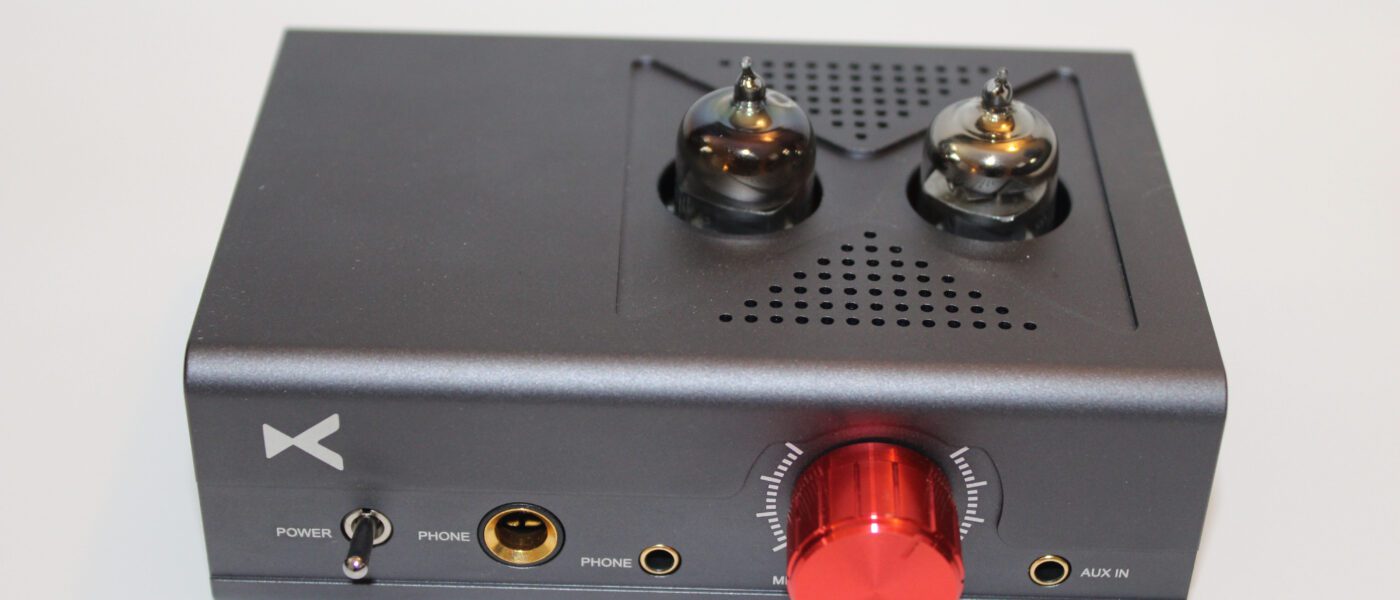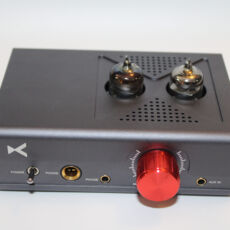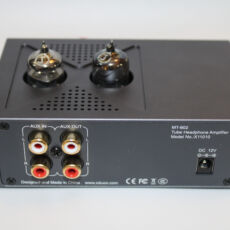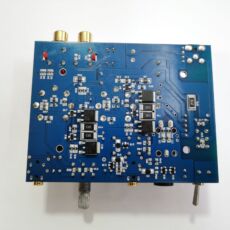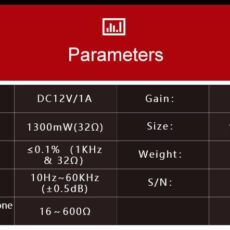Xduoo MT-602
disclaimer: The MT-602 was provided for the purpose of this review and the tube rolling article by Xduoo Audio. I have no financial interest in Xduoo or any of its distributors, nor did I receive any compensation beyond the product itself for this review. If you have an interest in purchasing any of the Xduoo amplifiers I have recently written about, I suggest you check out Xduoo’s website directly as they now offer direct sales. You can also follow them on Facebook for more information.
Unboxing / Packaging:
The packaging of the MT-602 is a new style for Xduoo with a very western retail look to the box. The front has the line drawing of the amp while the reverse has company info and some suggested uses but does not have even basic specs. Lifting the top of the box reveals the manual and then a couple of blocks of heavy foam. The top most block serves to protect the pre-installed tubes, while the lower block protects the 602 itself. Beneath the unit and foam protection is a box containing the power supply cable. One thing worth noting, if you get the MT-601 and 602 both like I did, the power supplies look identical, have the same sized barrel connector so will physically interchange, but are not cross-compatible as the 602 uses a 12V power supply while the 601 uses a 24V supply. Close inspection of the box on the power supply does show that the only difference in the two (externally) is the voltage label. With these in black lettering on a black surface they do not immediately leap out so marking them in some easily seen way as you unbox them may be a wise plan to keep from having problems later.
Build/Fit:
The case is anodized aluminum in a matte gray with removable end plates and rear plate. To remove the internals for cleaning or repair, only the rear plate needs to be removed as the internals no not attach to either side plate. The top of the case is vented well around the tube and the side plates also have a pattern of vents showing the Xduoo X. A pair of 6AK5 type tubes are used and protrude only about .5 inches above the top surface. Inputs are a 3.5mm jack on the right front and a pair of RCA jacks on the rear. Outputs are a 6.3mm single ended output (a 6.3 to 3.5 adapter is provided) and a 3.5mm output on the front face, and a line out provided by a pair of RCA jacks on the rear of the unit. The line-out is volume controlled so the unit can be used to introduce some tube coloration and volume control to powered monitors. The 3.5s are clearly labeled as phone and aux in respectively so shouldn’t be easy to confuse. This is purely an amplifier so no usb, optical, or coax connectors are needed and the only other features not covered yet are a large red volume knob centered immediately in front of the tubes and a 12V DC input on the rear of the unit. Overall the unit stands a little over 1.5 inches tall (excluding the tube) , about 5 inches long and a little over 3 inches deep. The unit weighs slightly less than a lbs as well so is quite compact and comparable to the Schiit Magni or Modi in size and heft. The 602 is very slightly heavier than its 601 counterpart but for all practical purposes these two are identical in size and heft.
Internals:
The MT-602 uses a pair of 6AK5 tubes as the pre-amp followed by four D882M transistors that are used as a buffer stage. The 601 requires a large heatsink for its mosfet output, but here the four D882M transistors are mounted to the bottom of the board and don’t require the large heatsink used in the smaller sibling. Those interested in the D882M can find the datasheet here. Capacitors are either Elna Silmic or RubyCon branded throughout. The 602 also lists a built in mute circuit in the headphone output to prevent pops at power on. This either isnt present in the 601 or simply isn’t mentioned in the documentation. The 602 lists gain as +15dB so is slightly lower than the 601 in that measurement, but output power is much larger at 1300 mW into a 32Ω load compared to the 200mW of the 601. SNR is improved as well at 115dB compared to 100dB (601) while THD+N is not quite as good at <.1 at 1kHz with a 32Ω load. The 602 lists as suitable for use with headphones between 16 and 600Ω impedance and indeed was capable of powering just about anything thrown at it. The 6AK5 (6J1 Chinese designation or EF95 Euro designation) gives the user plenty of options to roll tubes in the 602 (an exercise I intend to do a bit later), as the 6AK5 has been in nearly constant production since the 1940s when it was introduced by Bell Labs and Western electric and used in early radar systems in fairly large numbers. It is not uncommon to find western electric examples with USN and an anchor on the packing designating those tubes accepted for military use during the war.
Sound:
Normally the goal of an amp is to be gain on the wire and nothing else, but when we introduce a tube pre, it almost always has an impact on the signal in an audible way. So here we can talk about coloration as not only expected but welcomed. Those who want to avoid such coloration of the sound will likely opt for one of the many solid state amps that are available instead anyway. The MT-602 utilizes the 6AK5 tube family. This family also includes tubes labeled 5654, 6J1 (Chinese and Russian designation), CV4010 (British), EF95 (Euro), 403a/b (Western Electric) as well as 6AK5W and 5654W designations. The tube was originally used in radar sets and was used in a ton of military equipment over the years so they are commonly found as new old stock in military stockpiles. With nearly constant production from the early 1940s through today there are too many options to possibly account for all of them but they are somewhat less common on the market than 12au7 or 6DJ8 pre-amp tubes that are commonly used in this type device and may require a bit more digging to surface satisfactory pairs for use in the MT-602. I am working on a tube rolling article and will add the link here when completed but will suggest the early Sylvania JHS 6AK5 as a good all-around tube with better stage size and tonality than the stock offering. When used a pre-amp, I also found the Western 403b to be a good option as it complemented the Klipsch R-R1PM and Kanto TUK powered monitors I had available well.
Thoughts / Conclusion:
I had mixed emotions about the little brother in this series as I think it was of somewhat limited utility and should be thought of more as a pre-amp with a earphone output than a bonafide headphone amp. I have no such reservations here. The MT-602 offers good power and was able to handle all but the most demanding headphones without any issues. The pre-amp function worked very well using both powered monitors and in place of my standard pre-amp in my home system (which is asking a lot). If there is a drawback it is that as a pre-amp you only have a single RCA input on the rear and 3.5mm jack on front and no switching to handle which input is in use. This limits the 602 to being a single source pre-amp. Thankfully for most this will be part of a desktop stack and will probably be asked to handle output from a DAC or perhaps directly from a PC sound card. I think this is the role Xduoo envisioned the MT-602 being used in and it performs quite respectably when used as such. The 5654W miniature tube has a lot of options to tune the sound to the end-users liking although it does puzzle me that the 601 went with the more expensive and more commonly available 6DJ8 while the bigger brother went the miniature route. I suspect this was in order to keep the cases on the two models the same size and dual 6DJ8s simply could not be fit in the same space. I’m not sure I would have chosen the case size as my over-riding variable here as going with a more common tube would open up even more options for buyers to tune and tweak the device.
Summary
Pros: well built, good power, pre-amp function works well
Cons: single source with no switching between RCA and front 3.5 jack.

